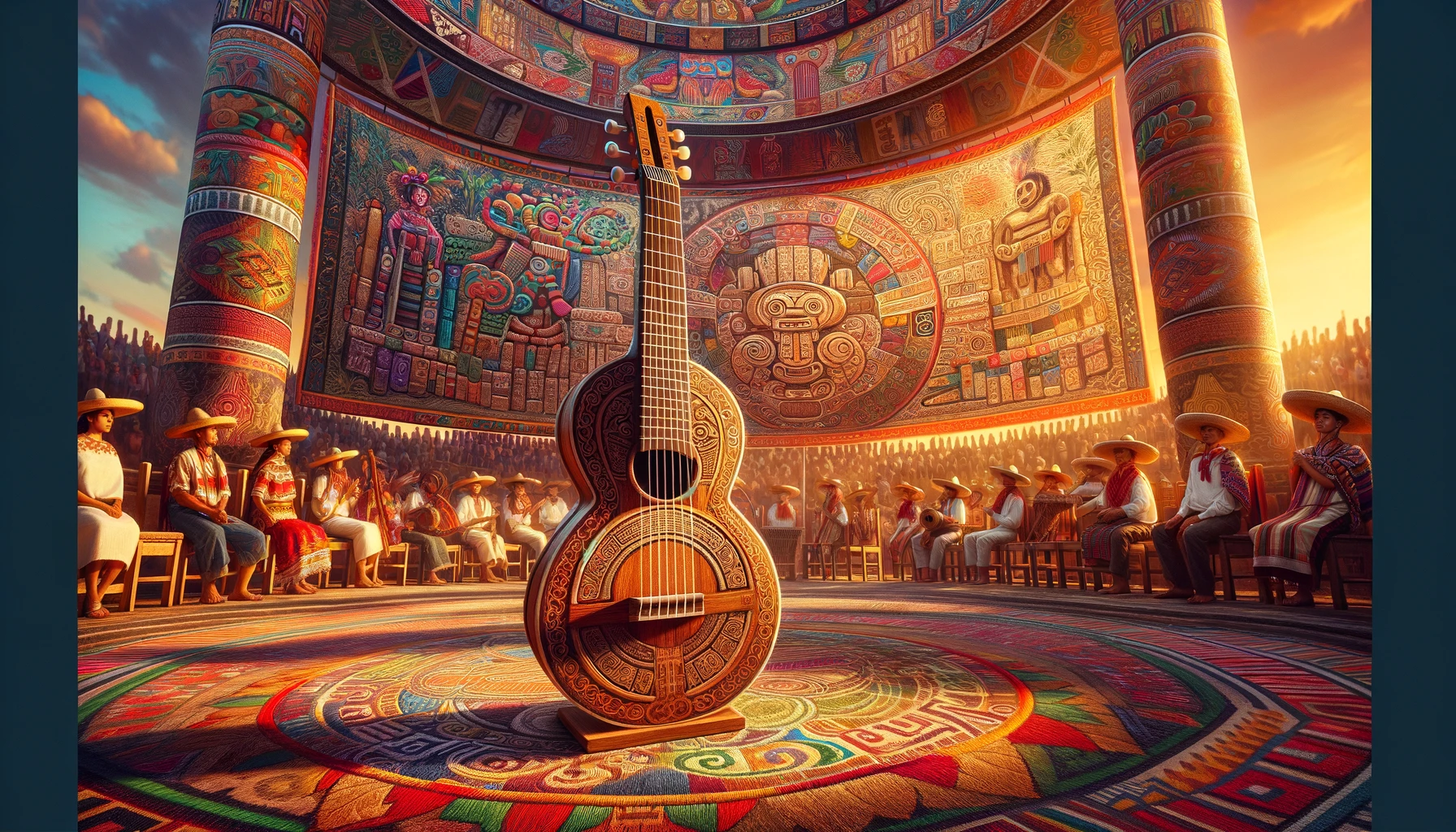The tololoche, a traditional musical instrument hailing from the vibrant heart of southern Mexico, embodies the rich tapestry of the region’s cultural heritage. With its deep, resonant tones and rustic charm, the tololoche offers a unique window into the musical traditions that have shaped Mexican folklore and identity. This instrument, whose name is derived from the Mayan words “tolo” (bull) and “loch” (embraced), stands as a testament to the enduring legacy of indigenous craftsmanship and musical ingenuity.
The Roots of the Tololoche
The journey of the tololoche from its Mayan linguistic roots to its revered place in Mexican music is a fascinating tale of cultural synthesis and adaptation. Originally named “tolo loch,” which signifies the act of embracing a bull, the instrument’s name mirrors its robust and embracing sound. As a variant of the European double bass, the tololoche shares similarities in form and function but distinguishes itself through its slightly smaller size and unique construction tailored to produce the rich, low-pitched sounds characteristic of traditional Mexican music.
Design and Construction
Crafted with meticulous care, the tololoche features three or four strings, depending on the regional tradition or the musician’s preference. It is played pizzicato, meaning the strings are plucked with the fingers, allowing for a direct, tactile connection between the musician and the instrument. This method of playing contributes to the tololoche’s distinctively warm and earthy sound. The instrument’s purely acoustic nature stands in stark contrast to modern electric instruments, offering a more authentic and immersive musical experience.
Also Read: Experience the Magic of Niles Garden Circus A Timeless Family Adventure
Regional Significance and Musical Styles
While the tololoche has roots in southern Mexico, its influence and use have permeated various regional music styles, particularly in northern Mexico. In the north, it is an indispensable component of Fara Fara and norteño music, genres that also incorporate instruments like the accordion, snare drum, saxophone, guitar, or bajo sexto. The tololoche’s adaptability to different musical settings underscores its versatility and enduring appeal.
In addition to its role in professional music settings, the tololoche is a staple in more informal contexts, such as bars, taverns, and university student performances in Guanajuato, where it accompanies traditional songs during callejoneadas. This wide range of applications highlights the tololoche’s ability to bring people together, transcending social and cultural boundaries through the universal language of music.
The Challenge of Modernity
The mid-20th century posed significant challenges to the tololoche’s traditional role in Mexican music. The advent of modern instruments like the drum set and the electric bass began to overshadow the tololoche and other traditional instruments like the tambor de rancho. These electric alternatives offered new sounds and were often more convenient for bands in terms of portability and amplification. However, this shift towards modernity also sparked a movement among musicians and composers to preserve and revive traditional instruments for their cultural and musical value.
In recent years, there has been a resurgence of interest in the tololoche, driven by a broader desire to reconnect with traditional musical roots and to celebrate Mexico’s rich cultural heritage. Musicians are once again embracing the tololoche for its unique sound and its role in fostering a sense of identity and continuity within the realm of traditional music.
The Tololoche Today
The present-day landscape of Mexican music sees the tololoche enjoying a renaissance, cherished not only for its historical significance but also for its ability to add depth and authenticity to contemporary musical compositions. Its purely acoustic sound provides a soulful counterpoint to the electronic timbres that dominate much of today’s music, offering listeners a taste of Mexico’s musical heritage.
Furthermore, the tololoche serves as a symbol of resistance against the homogenization of global music culture, reminding us of the importance of preserving traditional instruments and sounds in an increasingly digital world. Its continued relevance speaks to the resilience of cultural traditions and the enduring appeal of music that resonates on a profound, emotional level.
Conclusion
The tololoche’s journey from a regional folk instrument to a symbol of Mexican musical heritage underscores the dynamic interplay between tradition and modernity. As we delve into the enchanting sounds of the tololoche, we are reminded of the power of music to preserve cultural identities, foster community, and transcend temporal boundaries. In celebrating the tololoche, we celebrate the rich diversity of Mexico’s musical landscape and the timeless beauty of its cultural expressions.

